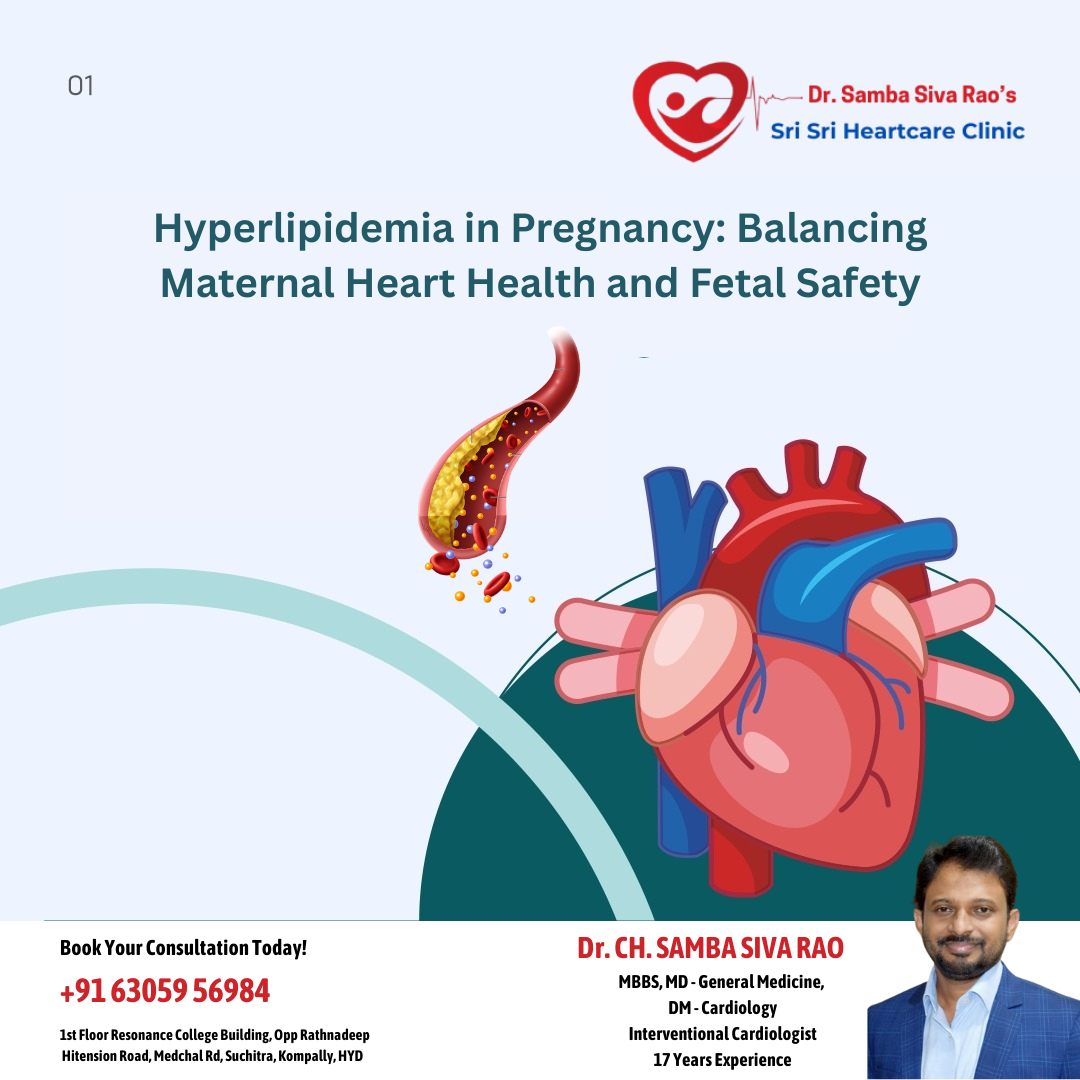Hyperlipidemia in Pregnancy
Pregnancy is a unique physiological state that induces major changes in lipid metabolism. While increases in cholesterol and triglycerides are essential for fetal development, excessive or uncontrolled dyslipidemia can pose significant risks to both mother and child. With cardiovascular disease remaining a leading cause of maternal morbidity, understanding how to manage lipid disorders in pregnancy is critical for healthcare professionals.
Physiological Lipid Changes in Pregnancy:
1) Cholesterol and triglycerides rise* progressively, peaking in the 2nd and 3rd trimesters.2) Triglycerides* may increase 2.5–3× baseline; LDL particles shift toward smaller, denser, more atherogenic forms.
3) HDL cholesterol* peaks in the second trimester, potentially balancing atherogenic risk.
4) Lipoprotein(a)* \[Lp(a)] nearly doubles by week 35; elevated levels are linked to pre-eclampsia, preterm delivery, and low birthweight.
For women with *familial hypercholesterolemia (FH)*, these physiological rises compound pre-existing risks, warranting close monitoring.
Risks Associated with Maternal Dyslipidemia
Research links abnormal lipid profiles during pregnancy with:
* Hypertensive disorders (pre-eclampsia, pregnancy-induced hypertension)* Gestational diabetes mellitus (GDM)
* Preterm delivery and macrosomia
* Postpartum impaired glucose tolerance and persistent dyslipidemia
* Early fetal atherosclerosis and higher lifetime cardiovascular risk in offspring

Practical Approach to Management
1. *Pre-Conception and Screening*
* Women with pre-existing dyslipidemia should receive *pre-conception counseling* with cardiologists, lipidologists, and dietitians.* Baseline lipid profile and *Lp(a)* should be measured before or early in pregnancy.
* Lipid monitoring during pregnancy should be individualized, but early screening can identify high-risk patients (e.g., FH).
2. *Lifestyle and Behavioral Interventions*
* Mediterranean-style diet* rich in fruits, vegetables, nuts, soy, and olive oil shows long-term metabolic benefits.* Avoid animal fats, trans fats, and ultra-processed foods.
* Moderate *physical activity* is safe and reduces excessive gestational weight gain and metabolic complications.
* *Absolute contraindications*: alcohol and tobacco.
3. *Pharmacological Therapy*
Most lipid-lowering drugs are avoided in pregnancy due to safety concerns. Current evidence supports: * Bile Acid Sequestrants (BAS):* Only officially approved therapy (e.g., colesevelam). Effective for LDL-C lowering but may worsen triglycerides and impair fat-soluble vitamin absorption.* Omega-3 fatty acids:* Safe; reduce triglycerides by 20–30% and lower risk of preterm birth.
* Fibrates:* Limited data; fenofibrate/gemfibrozil may be considered in 2nd trimester if TG > 500–1000 mg/dL with pancreatitis risk.
* Ezetimibe:* Limited human data; may be considered if benefits outweigh risks.
* Statins:* Traditionally contraindicated, but emerging evidence suggests safety in selected very high-risk women (severe FH, previous acute cardiovascular events). The FDA has softened warnings, allowing individualized decisions.
* Novel agents (PCSK9 inhibitors, bempedoic acid, inclisiran):* Insufficient data; not recommended during pregnancy.
4. *Lipoprotein Apheresis*
* Safe and effective in *homozygous FH* or severe heterozygous FH when drug therapy is inadequate or contraindicated.* Also used for severe hypertriglyceridemia to prevent pancreatitis.
* Availability is limited to specialized centers.
Clinical Challenges and Gaps
* Pregnant women are often excluded from trials, leaving limited safety data.* Cardiovascular risk in women remains underdiagnosed and undertreated compared to men.
* More registries and observational studies are needed to refine evidence-based guidelines.
Key Takeaways for Clinicians
1. Every pregnancy increases lipids*—but in women with dyslipidemia, the risk multiplies.2. Lifestyle therapy* is first-line, with emphasis on diet and exercise.
3. Bile acid sequestrants and omega-3s* are the safest pharmacologic options.
4. Statin therapy may be reasonable* in select very high-risk women (FH, ASCVD).
5. Multidisciplinary care* (cardiology, lipidology, obstetrics, nutrition) is essential.
